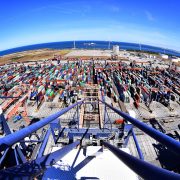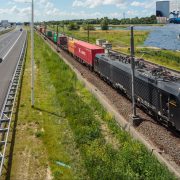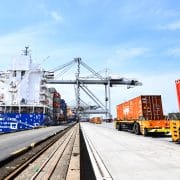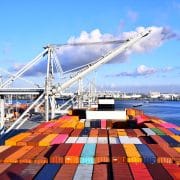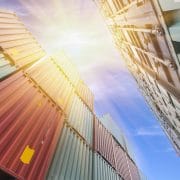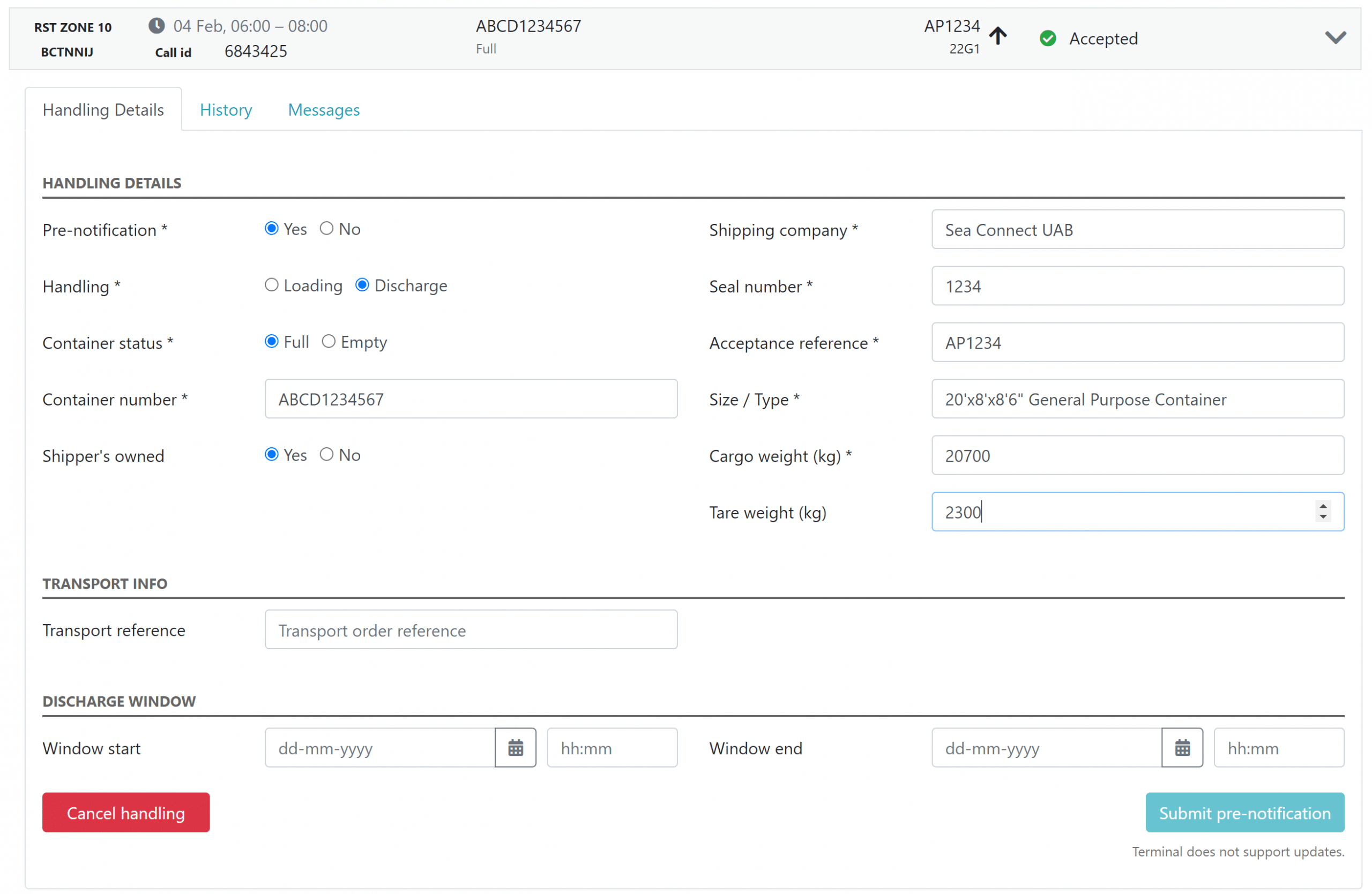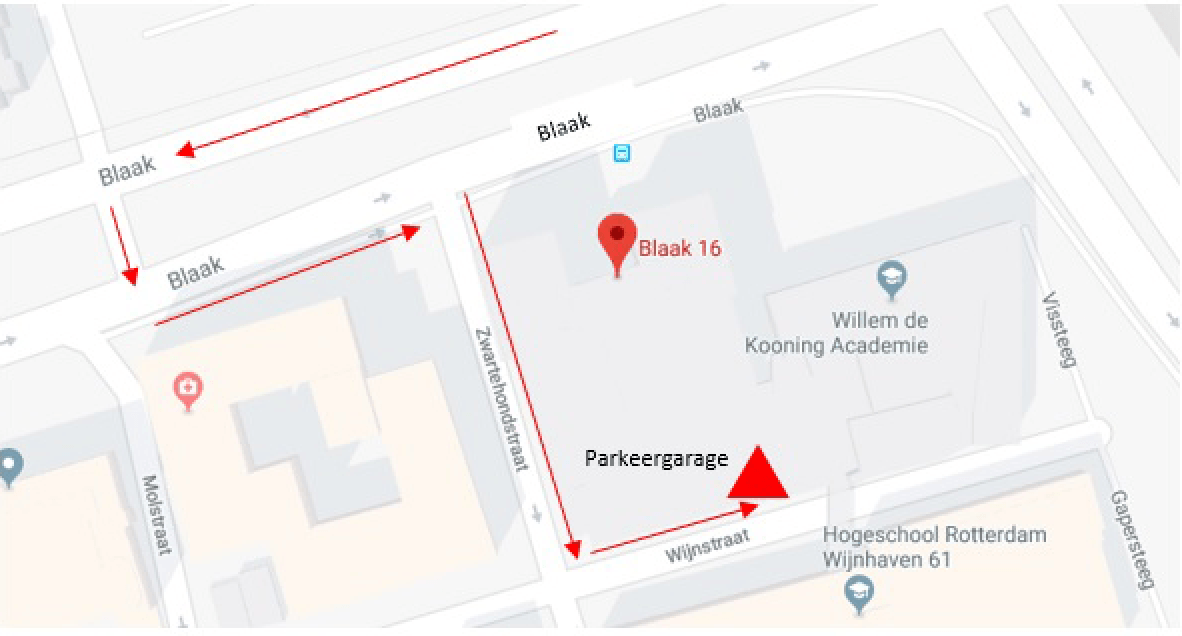CVB, textbook example of public-private partnership
With a joint implementation process and a joint campaign, “Prepared for the Container Release Notice”, Customs, Portbase and industry bodies have joined forces to ensure the smooth introduction of the Container Release Notice (CVB). Jointly informing and activating parties to prepare properly has enabled all cargo flows to be transported quickly to the hinterland. Elliot Donata of Customs and Marty van Pelt of Portbase look back and ahead together.
The introduction of the Container Release Notice (CVB) had been hanging over the market for several years. After being postponed several times, partly due to Brexit, the first phase of the CVB was introduced on 4 October 2021. The customs process for inbound cargo has been significantly altered by the CVB. Goods can only be taken from the port once an additional customs declaration has been made. With the advent of the CVB, there must be a match between the shipbroker/shipping company’s Declaration for Temporary Storage (ATO) and the import declaration. And an import declaration can be submitted only after the vessel arrives. In other words, the parties in the chain have become even more dependent on one another.
One message, one solution
Van Pelt: “It was clear to Portbase at an early stage that the CVB would lead to chain dependency. Everyone – Customs, shipping companies, forwarders, terminals – had an interest in a smooth implementation. Based on our role within the port community, we therefore proposed setting up a joint chain project. The aim was to offer a single solution to the market with a single message, so that even after the introduction of the CVB, goods could be moved from the port quickly with the minimum of administration. In my opinion, we have managed that very successfully together.” The CVB campaign is a joint initiative by Customs, Portbase and the industry bodies Deltalinqs, VRC, VRTO, Fenex, TLN, evofenedex, CBRB and Alliantie Douane Software (Customs Software Alliance).
Donata: “Portbase tackled the Container Release Notice process in a highly effective manner. They developed a joint campaign website and established a chain forum which included all the parties involved in order to ensure a consistent approach and message. Each meeting also focused on current issues and how to provide a single response as chain partners. The FAQs on the campaign website were immediately updated accordingly. As the questions that came up became more and more policy-focused over the course of the process, the role of Customs naturally increased.”
Website for questions
Van Pelt: “It proved to be a textbook example of effective public-private partnership. Naturally, Customs is the authority, but they are always open to coordination and consultation within the legal frameworks. That is pretty unique. Policy issues were addressed in the chain forum and discussed in the Customs-business forum (Overleg Douane Bedrijfsleven). In parallel to their own website, they have started using the campaign website as a single central resource for answering all frequently asked questions about the Container Release Notice.”
Donata: “Using the campaign website for this purpose was a significant step for us at Customs and is often used as an example internally. We see it as an effective solution for connecting with the target audience better. The integration with other channels was also important. At Customs, we set up a separate mailbox for questions relating to the Container Release Notice. Users could access it through the campaign website and it provided input for updating and supplementing the FAQs.”
Integrated whole
Van Pelt: “The campaign website linked customs information to the logistics process. The end result was a truly integrated whole. I feel that is the strength of this approach. We also did everything in partnership with industry bodies, who have always communicated a single message to their members. A key thing was that we turned a common problem into a common solution.”
Donata: “It was a combination of things. For example, in addition to the website, we held information sessions and webinars in conjunction with the industry bodies. That increased trust, which is reflected in the final result. Beforehand, there were fears that the introduction of the Container Release Notice in October would bring the port to a standstill. In the end, those fears proved unfounded. Not necessarily because companies did everything right, but because solutions had been devised beforehand on how to mitigate any mistakes. In addition, a crisis team was on standby for two weeks after 4 October. Through the chain forum and a Whatsapp group, issues were immediately communicated and addressed.”
Promoting prenotifications
Van Pelt: “In the CVB campaign, there was a strong emphasis on the benefits of using prenotifications, supplemented by an (automatic) presentation notification from Portbase’s Port Community System (PCS). As a result, notifying parties do not have to wait until the goods have been discharged before making the additional customs declaration. Companies that are linked to the Portbase service Cargo Controller also receive a ‘trigger’ to automatically send the required presentation notification to Customs in real time. Which is why we also included the industry body for software suppliers in the process. After all, prenotifications require the right software and the use of the right trigger from Portbase.”
Donata: “Of all import declarations, about 20% to 25% are now done using prenotifications. Using them really makes a huge difference for companies. It means they are much better able to plan – for example, because they already know in advance whether we want to inspect the goods at Customs.”
Van Pelt: “I would like to urge those who are not yet working with prenotifications: as a notifying party, talk to your software provider about it. This way of working is faster and more efficient not only for notifying parties but also for the rest of the logistics chain. It therefore results in more accurate planning for carriers and terminals. By using Cargo Controller, notifying parties also get access to the summary declarations submitted by shipbrokers/shipping companies. In addition to reusing data, they are thus ensuring better quality in the declaration process.”
Next steps
Donata: “October’s launch of the Container Release Notice was the first of four plateaus, in this case dealing specifically with imports. Plateau 2 for transit cargo will be addressed once the new customs system for transit goes live. No formal decision has yet been taken about the scheduling of the following plateaus. We will notify businesses at least six months before the planned launch. At Customs, we definitely intend to continue on the same joint footing for the subsequent plateaus. I expect that cooperation will only increase, particularly with regard to choices in the design phase.”
Van Pelt: “There are always areas for improvement, but Customs, industry bodies and Portbase can be collectively proud of the way we tackled the CVB. We do need to realise that being able to cooperate with Customs in this way is quite special. I believe that, just as we did for Brexit and now the CVB, we should also take a broadly-based approach to future logistical challenges. The chain is so interdependent. Let’s make that pie bigger together!”

